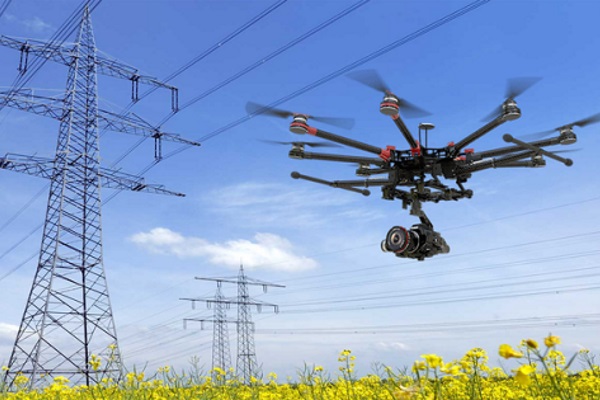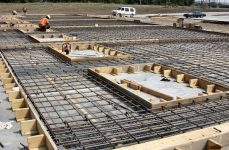Published on the 16/11/2016 | Written by Donovan Jackson

ERP vendor delivers proof of concept for drone-powered automation…
What caught our attention about IFS work with drones is at least two things. One, the perspective of an ERP vendor getting stuck into this sort of way out front technology is bound to be interesting. Two, what it has done with drones seems to have real, practical application right here in New Zealand.
Yes, we received the press release trumpeting Domino’s Pizza’s ‘drone trial’ a few months back, but didn’t bother doing anything with it, seeing it for what it was: a PR stunt. The likelihood of a pizza winging its way down busy Queen Street just didn’t resonate, not the least because of CAA rules, lamp posts and pigeons (NBR’s Chris Keall gave the whole thing a tremendous fisking*).
So, what has IFS done? It recently demonstrated a system in which a drone is connected directly to its back-end systems, in this case inspecting powerlines for faults and problems, then sending back data and automatically generating work orders and schedules to get technicians to where they need to be.
The technology is described by the company as an ‘Internet of Things proof of concept’, which uses the fliers as the sharp end of a system of record, looking at aerial power lines in forested areas. As New Zealanders know all too well, aerial power lines are vulnerable to severe weather as well as seismic activity. It is necessary to inspect lines regularly; the traditional way to do that is in a helicopter. That’s expensive and potentially dangerous, to which a recent crash in Northland and the subsequent suspension of the use of Robinson choppers attests.
The vendor’s research and development arm, IFS Labs, doesn’t just flick a drone down the wire. It also uses computer image analysis, combined with its recently released IoT Business Connector, equipping the system to fly a camera out, video the powerline, and process the images in real time to detect problems. That data is fed into IFS Applications to create the work order, to which is attached all relevant information, such as GPS coordinates, pictures and a summary of the problem, so the technician knows where the problem is and what he or she might need to set it right.
We got on the phone to Amsterdam-based IFS Labs director Bas de Vos to find out more. He started with an explanation that one of the key purposes for IFS Labs is to ‘inspire clients to think about getting more from business applications’. “Everyone is talking about digital transformation; we’re looking at how we can get more out of business applications not by looking at technologies in isolation, but by combining available technologies. That’s how this started. We’ve monitored drones for a while to see if clients can use them in a broader way; we asked, ‘what do we need to do to allow clients to effectively use drones to solve business problems?”
The resulting proof of concept, he said, combines ‘advanced’ analytics and computer image processing with the physically exciting bit – the teenager in all of us loves the idea of remote controlled flying machines – and feeds that all the way into the back end. “This magnifies the effect you get from having a drone in the field. If you look at a drone as a ‘standalone’, sure, it has value. If you take the data it can gather, then automatically process it, the results you can achieve are far greater,” explained de Vos.
The PoC establishes just one use case; there is no shortage of possibilities; as de Vos said, it serves to inspire. Those working in various vertical industries are likely to find their own applications for a drone which can go out and closely inspect artifacts, whether Alaskan oil pipelines, aircraft vertical stabilisers (that should conjure up images of remora fish), the sides of buildings, the insides of sewers and so on. “What we believe is important is that this has demonstrated the readiness of the back end applications to take feeds directly from drones. [With that established] we expect clients will be inspired to find their own uses.”
De Vos added that issues with legislation governing what can be put into the sky and other potential ‘bumps in the road’ are likely and will also probably be country-specific. However, we’re inclined to believe that getting the OK to buzz a drone along Delta’s much-maligned network is a far more realistic proposition than hauling lunch down Auckland’s main drag.
* Just as this story was written, we received another press release from Domino’s, announcing that it has delivered the first commercial order by drone in Whangaparaoa. The delivery took place with CAA approval and was overseen by a team of drone experts and a drone pilot, although the device flew autonomously using GPS navigation. As a technical achievement, that’s remarkable, particularly given that it is a windy day – but we don’t believe drone delivered pizzas solve any particular problem (and while it establishes the proof of concept, the cost of doing so is likely to be eye watering). On the other hand, we do believe IFS’ foray into drone technology is likely to have legs. Or wings.



























